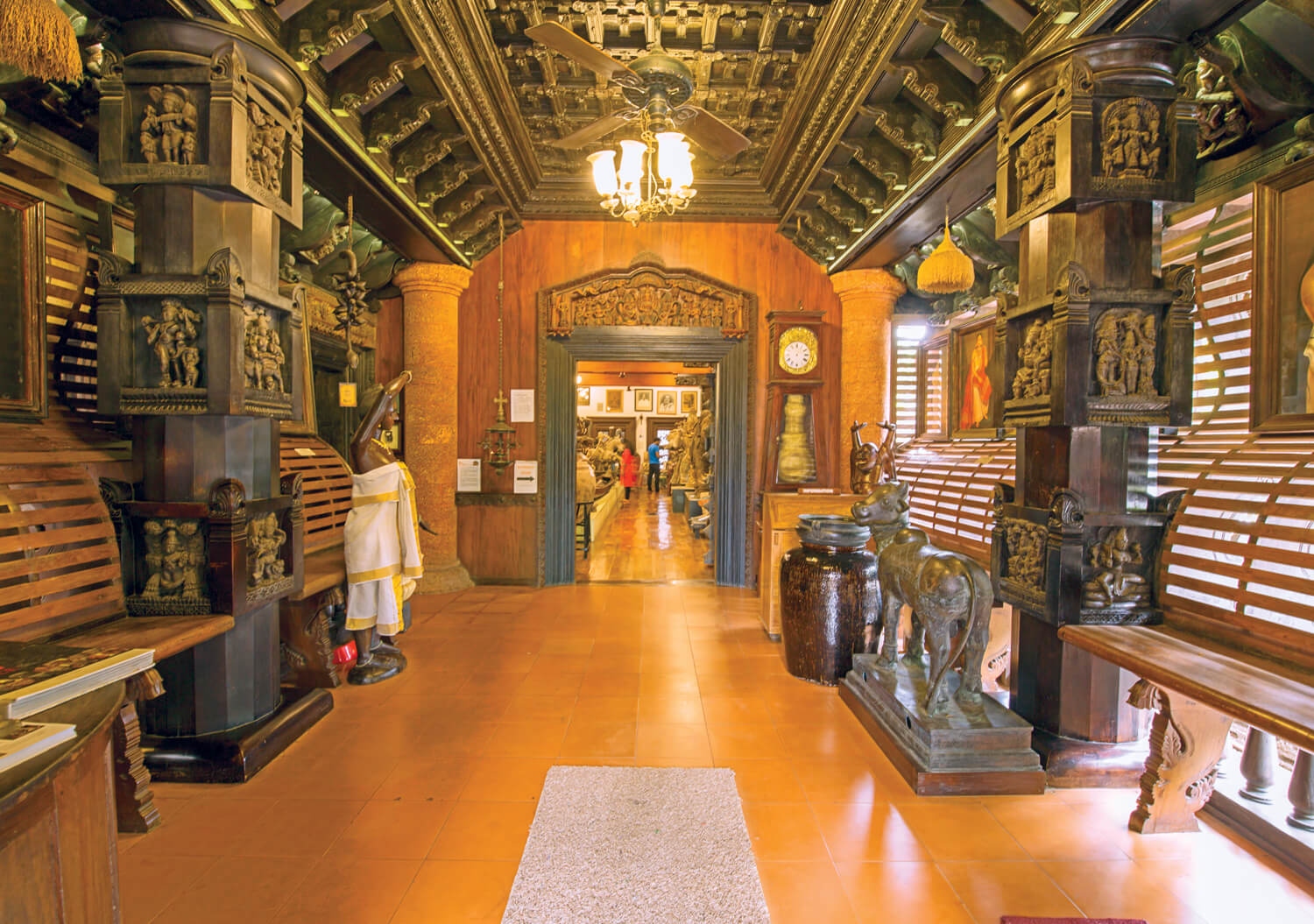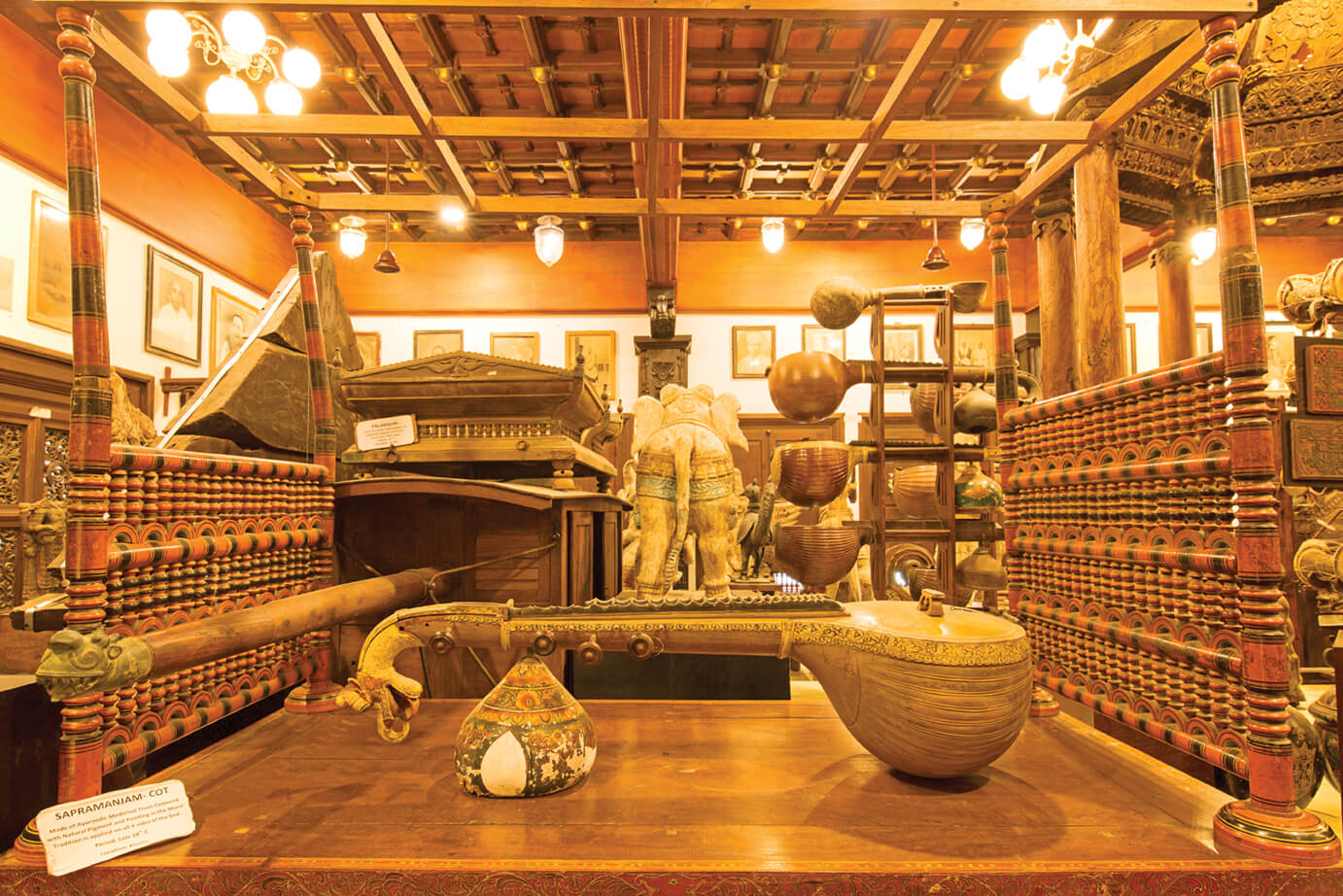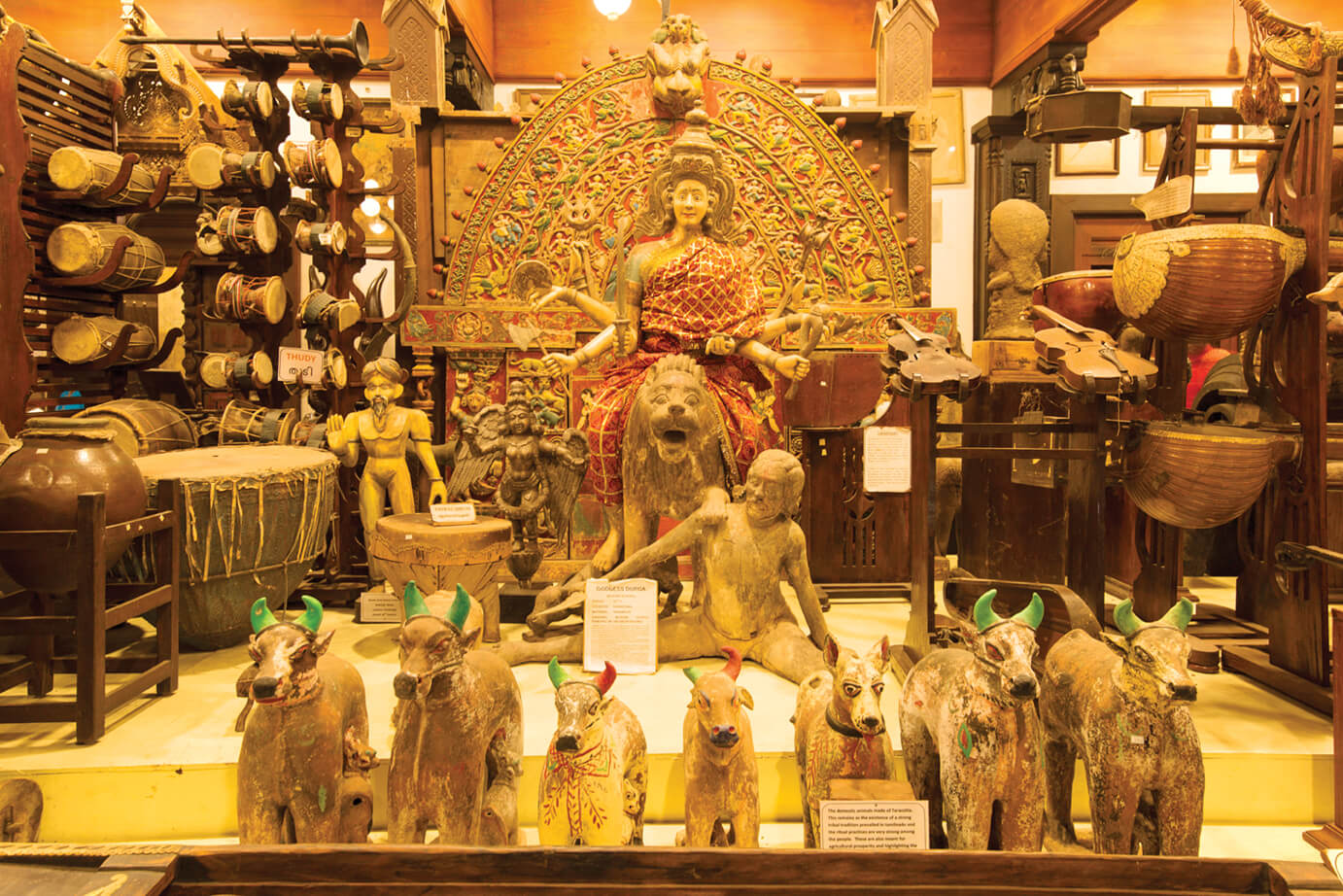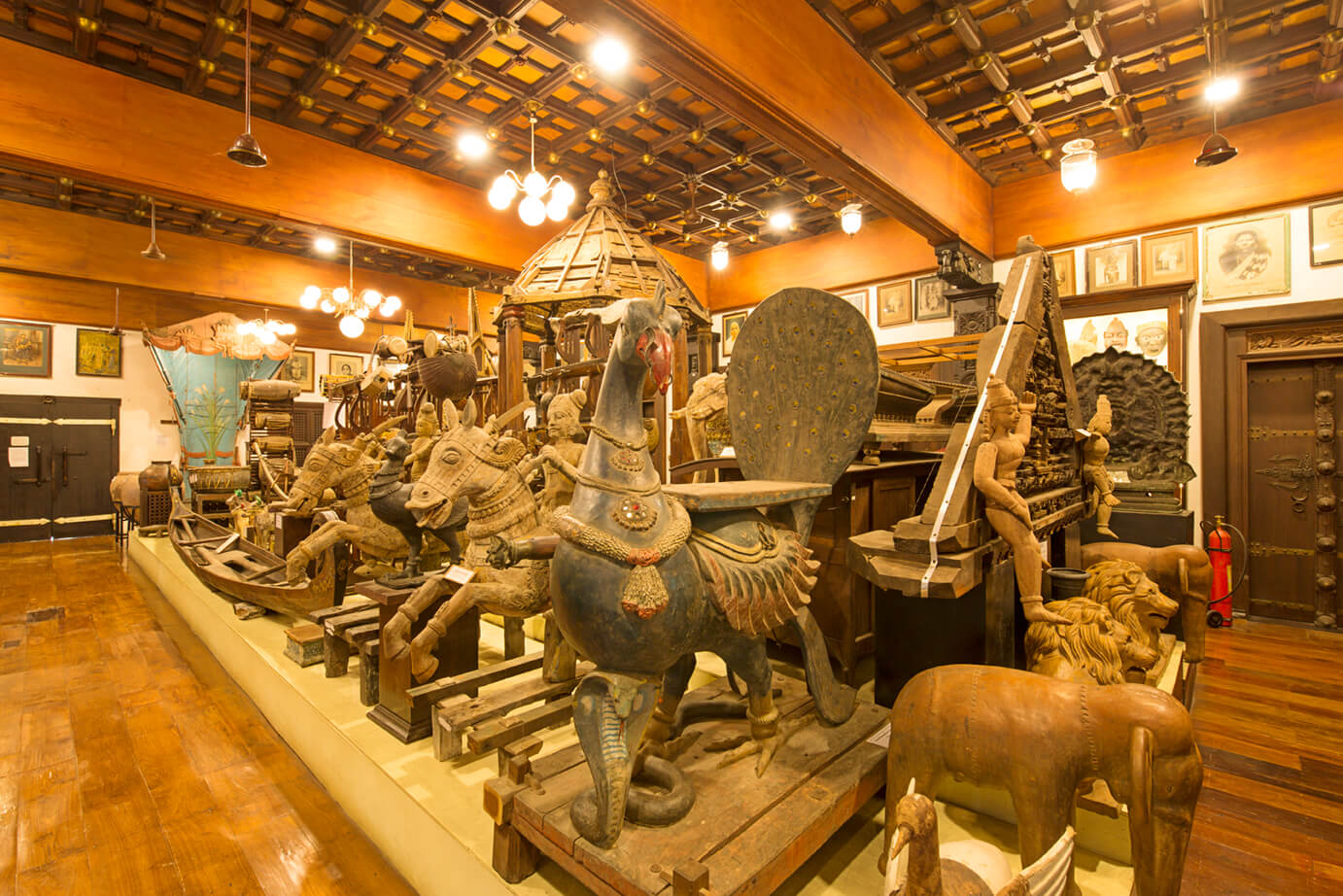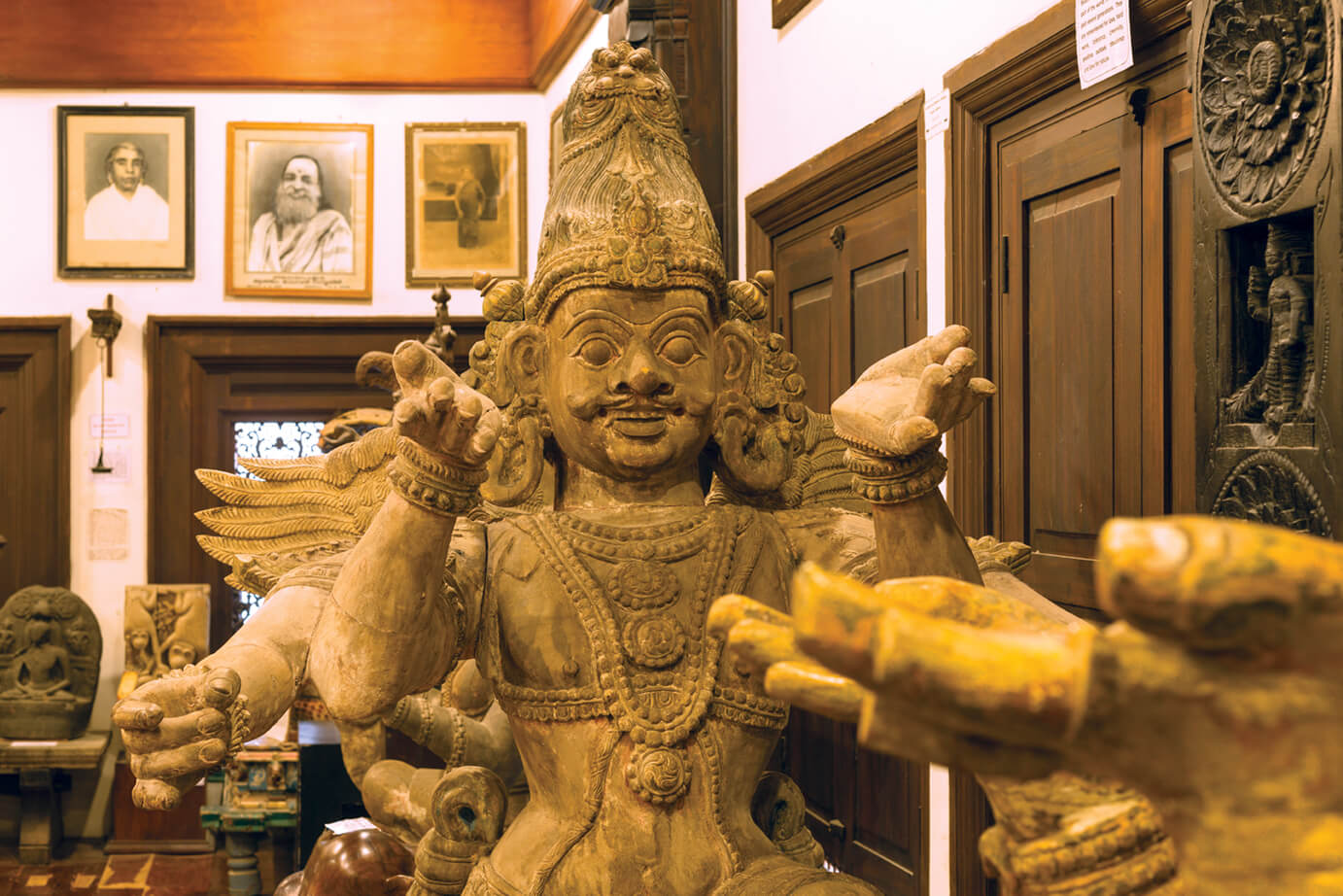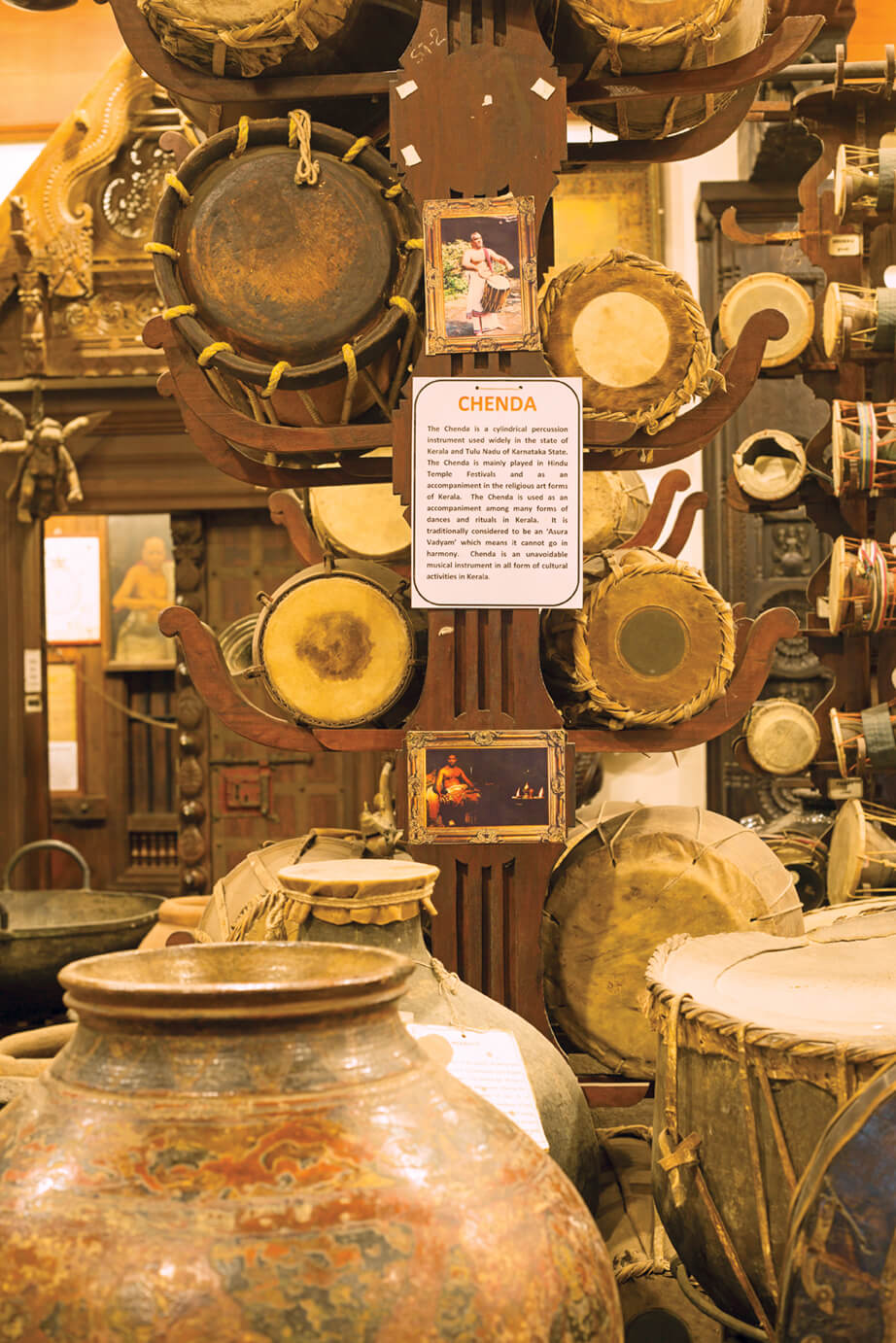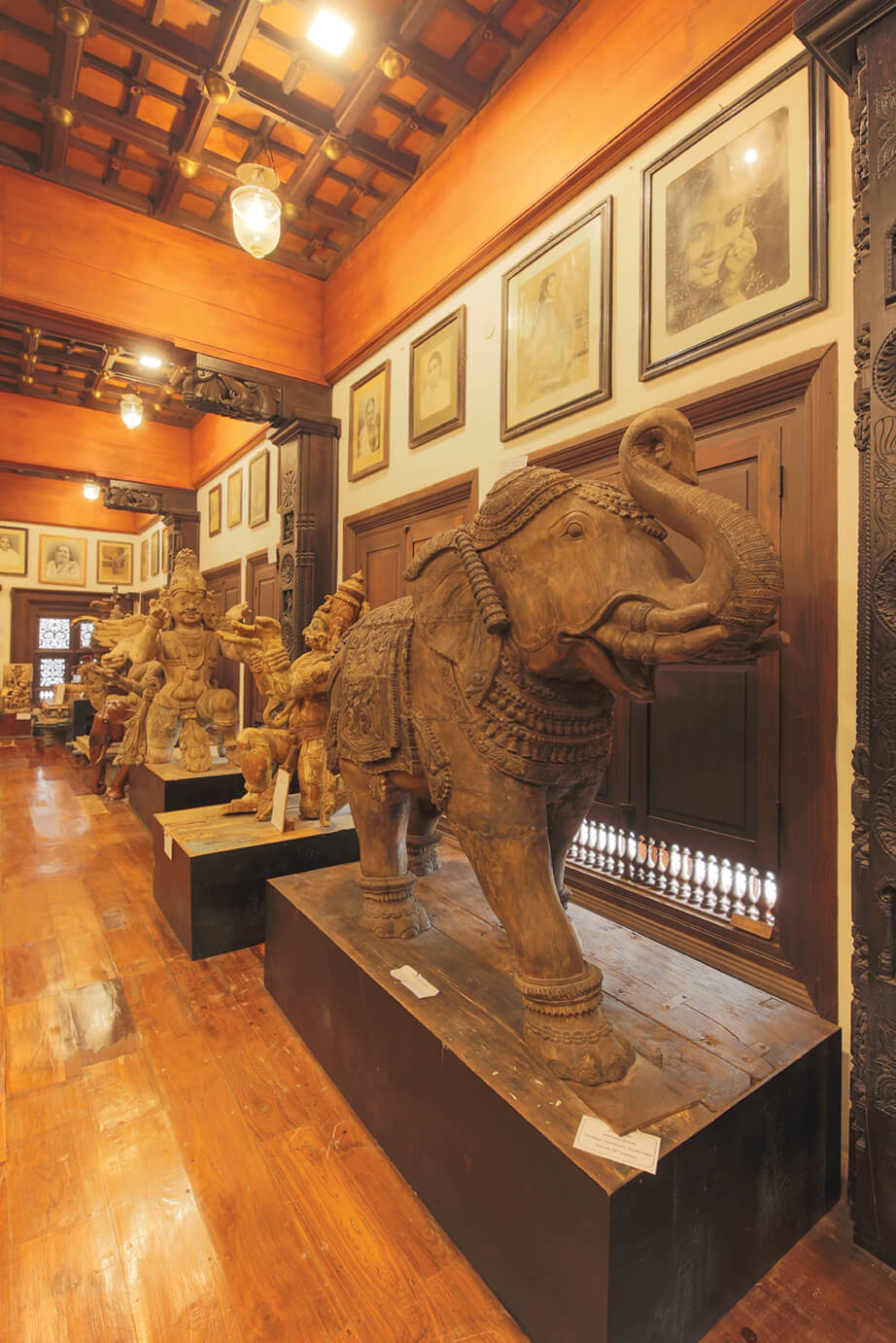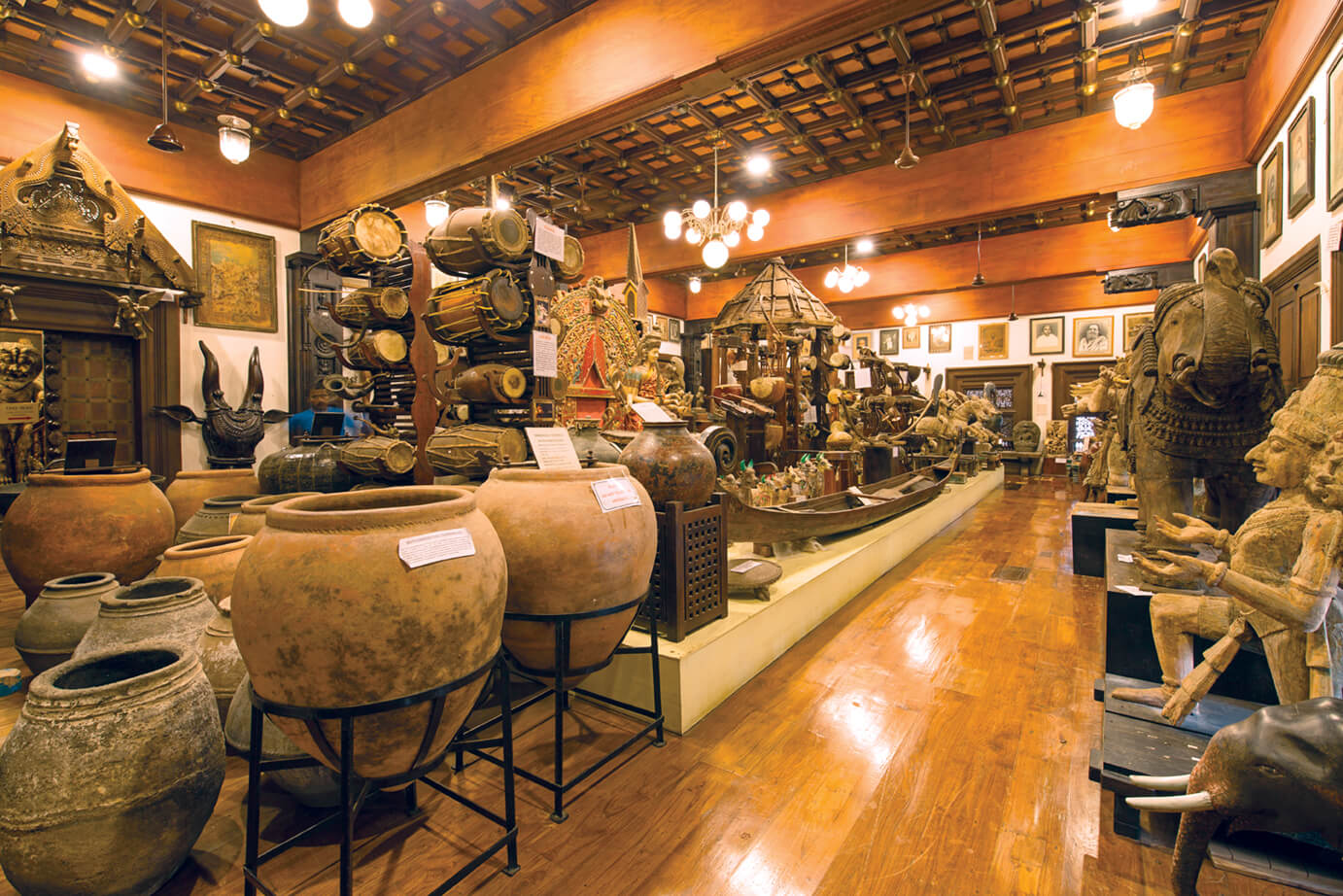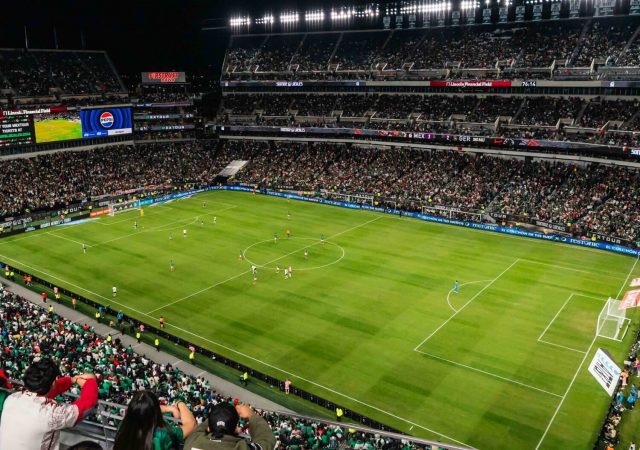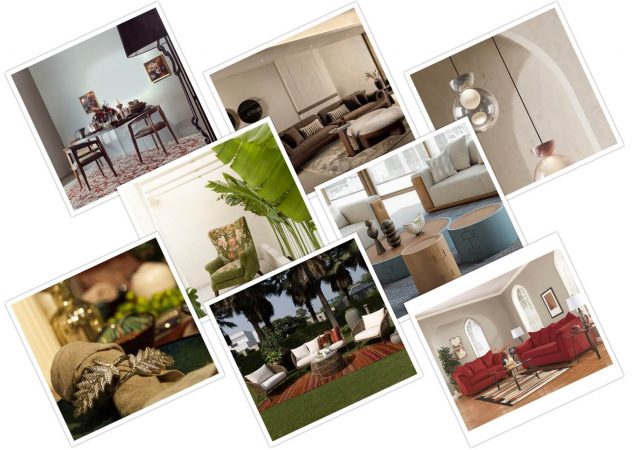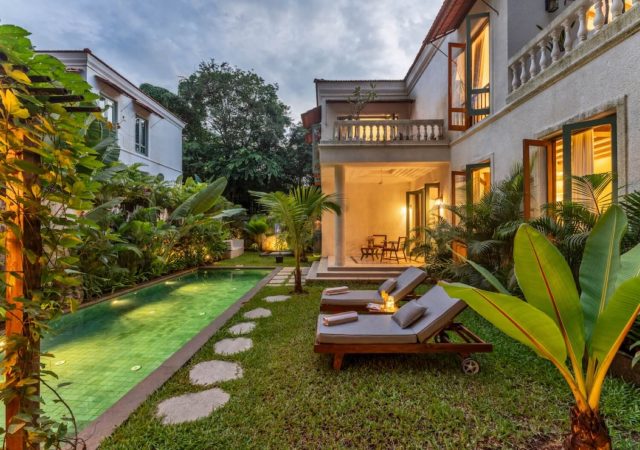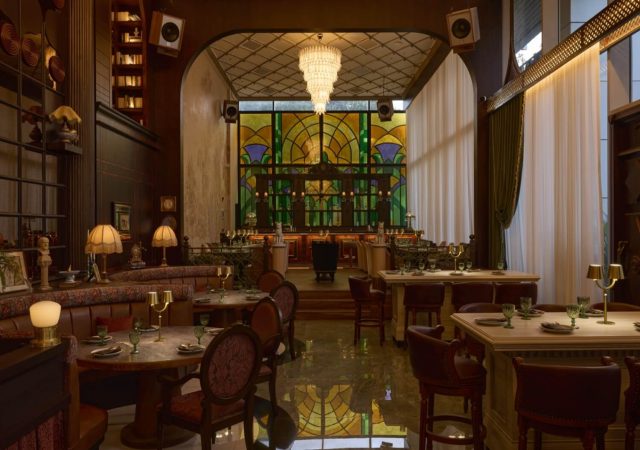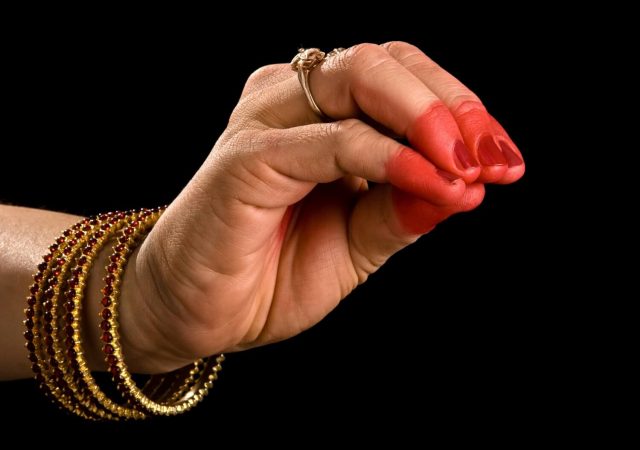Suneesh Suresh
The Kerala Folklore Theatre and Museum was founded by George J Thaliath, an antique dealer, in the year 2009. This museum tells the story of the architectural and cultural heritage of Kerala through the schools of architecture from the three princely states, namely the Malabar style on the ground floor, the Kochi style on the first, and the Travancore style on the second floor. The three-storied brick-red building stands magnificently against a natural green backdrop, adjacent to the Ferry Junction in Thevara in Kochi. It is secured by an aureate metal gate featuring relief figurines that represent various characters from the tales of Lord Krishna.
The facade of the museum reminds you of the entrance of an intricately designed Thrithala Kshethram, a three-storeyed temple, with its gabled roofs featuring ornate wooden carvings, made to perfect joinery, and an artful assembly of carved wooden columns, pillars, relief figurines, wall panelling, and elaborately detailed roof supports. A gigantic three-tiered lamp and two elephants on either side of the entrance, carved entirely out of black stone, accentuate this fact. The colossal black entrance features the Manichithrathazu, a majestic, engraved, ornate lock which was once used to secure the doors of the traditional Nalukettu and Ettukettu (four-sided and eight-sided abodes found in Kerala).
According to Annie George Thaliath, wife of George Thaliath, the entrance has been reconstructed using the remnants of a 16th century Tamil temple, while the wood works have been curated from different parts of Kerala.
Step barefoot into the Mukhayamam (technically, the entrance of a temple; here, the verandah) and you can feel the texture of the elegant wooden flooring, the warmth of the earthy hues, while the soulful music takes you to a spiral back in time. The space impresses you with its sculptural entities of mythological characters carved from wood, and intricately carved stone pillars. Wooden Kuthirakal, a structure that encompasses a series of wooden columns that follow the natural curve of the human body resting on the Charupadi (bench), runs around the perimeter of the Mukhayamam. This structure is bedecked with a series of Raja Ravi Varma paintings. A wide door connects the Mukhayanam to the adjoining hall. This dark wooden door supports a magnificent gable that features Goddess Rajarajeshwari.
The Mukhayamam connects to a room that offers an opportunity to appreciate the artistic and cultural elements of South India. The hall and the adjoining passage follow a Malabar architecture style, more precisely, the Indo-Islamic style featuring arches, domes, pendentive decorations, and rich geometrical and Arabesque designs. A closer look at the ceiling, and you will notice the wooden carving featuring brass domes and hand-carved floral details. Each floral pattern is distinctive and this makes a total of 300 unique wooden flowers. While the wooden ornamental windows follow the typical Islamic style, the engaged columns are influenced by Indian architecture, with the ten incarnations of Lord Vishnu supported on huge sunflowers.
The artifacts displayed include musical instruments, pottery, drums, temple lamps, boats, statues, swords, masks, string puppets, jewellery, tools, and utensils. You can also see the adornments used in the Theyyam art form – like the painted masks, headdress, breastplates, waist belts, bangles, ankle bells, arm ornaments, sickles, and swords. The hall extends to a passage lined with shelves filled with artifacts on either side. You can see a curated collection of ancient objects like jars, statues and pots made of terracotta from the Gupta period, porcelain and ceramic ware from China, and ancient manuscripts, styluses, jewel-boxes, tribal jewellery and coins. The passage ends in a small chamber that displays Thanjavoor paintings. The chamber itself follows Thanjavoor architecture with epigraphs, and intricate statues.
The intricacy and the wooden elements continue from the ground to the rich maple-coloured stairs in the forms of balusters, railings, graceful curves and fine craftsmanship. The stairs lead to the Kalithattu. This room is constructed following the Cochin school of architecture, a style that blends traditional architecture with Western influences. Some of the elements of this style include sprawling rooms, carved doors, and wooden panelling. Chiselled wooden work made up of sixty frames adorns the ceilings. The carvings and the vintage chandeliers break the monotony of the wooden element of the ceilings. The room displays the costumes and accessories of traditional dance forms like Kathakali, Theyyam, Koodiyaattam, Ottanthullal, and Mohiniyattam.
The Kalithattu leads to the Kanjadalam, translated as the lotus petal. This room structurally resembles a temple, but is actually a theatre where classical dances like Bharatanatyam, Kathakali, Mohiniyattam, and Kalari martial art performances regularly take place in the evenings. This room on the second floor mesmerises you visually with the indigenous aesthetics that come with modern amenities, and culturally, with the art performances.
You will be awestruck by the collection of mural paintings that line the lower portion of the roof. They are 253 in number, and these paintings are separated from each other by highly detailed wooden columns. There are large ornate pillars placed at the corners of the room. Intricate wooden embellishments, wooden panels that bear carvings, chiselled and carved ceilings, ornate cornices and pillars, and a surprising number of 333 statues, representing the 303 crore deities in Hindu mythology. This gives the room a rich and royal ambience. A golden-hued brass Nilavillaku (lamp) with nine branches forms the focal point of the theatre. A series of antique designed cane chairs are placed in a series for the audience.
The museum houses more than 4,000 artifacts, instruments and architectural décor and it took more than 20 years for George Thaliath to collect them. The museum aims to preserve the culture and heritage of our state. But it does more than that. The museum, with the objects, provides a medium to understand the lives of people of the past, and that though their lives may have been different, the emotions and desires of the human minds are the same.


